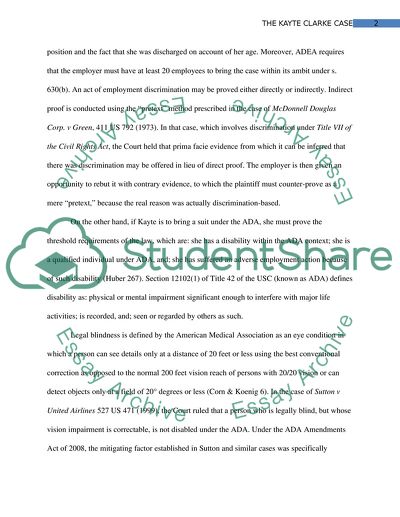Cite this document
(“Federal Anti-Discrimination Laws: Kayte Clarke Case Study - 1”, n.d.)
Federal Anti-Discrimination Laws: Kayte Clarke Case Study - 1. Retrieved from https://studentshare.org/law/1751306-kayte-clark-case
Federal Anti-Discrimination Laws: Kayte Clarke Case Study - 1. Retrieved from https://studentshare.org/law/1751306-kayte-clark-case
(Federal Anti-Discrimination Laws: Kayte Clarke Case Study - 1)
Federal Anti-Discrimination Laws: Kayte Clarke Case Study - 1. https://studentshare.org/law/1751306-kayte-clark-case.
Federal Anti-Discrimination Laws: Kayte Clarke Case Study - 1. https://studentshare.org/law/1751306-kayte-clark-case.
“Federal Anti-Discrimination Laws: Kayte Clarke Case Study - 1”, n.d. https://studentshare.org/law/1751306-kayte-clark-case.


